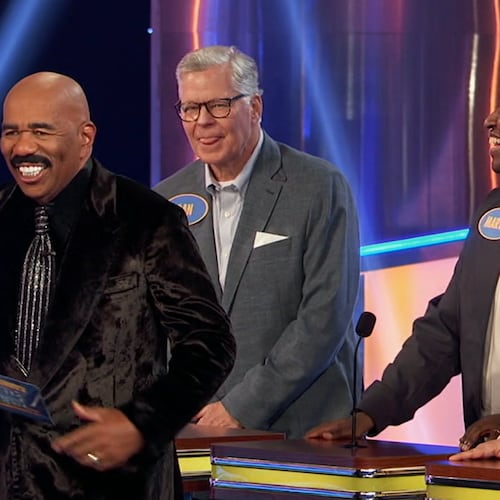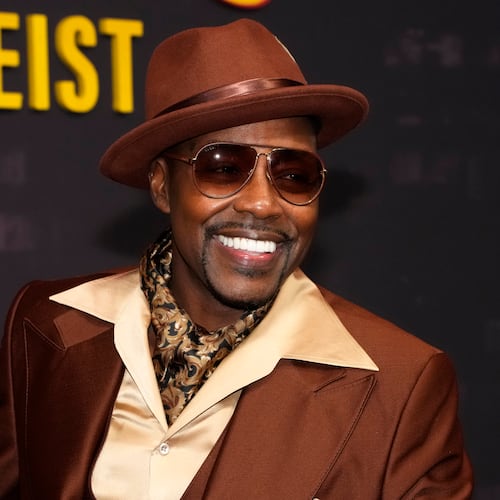In 1984, I was toting a boombox and a pair of oversized headphones everywhere I went.
Family outing to the grocery store? I sat in the back seat of our Cadillac Seville — the one with the ridiculous slanted trunk — oblivious to the world while hoping that Duran Duran’s “The Reflex” would be played at the top of the hour on our local Top 40 station.
Sitting by the pool in our backyard? Boombox, sans headphones, eagerly listening to Casey Kasem’s “American Top 40” on a Sunday afternoon and counting how many appearances Cyndi Lauper — the idol of my pre-teen years — would make (that would be three: “Girls Just Want to Have Fun,” “She Bop” and “Time After Time”).
While impossible to know at the time, 1984 was a pivotal year for pop music. Michael Jackson. Prince. Lionel Richie. The Police. Bruce Springsteen. The breakthroughs of Wham! and Madonna (who ignited her first “controversy” by writhing around the floor in a wedding dress while performing “Like a Virgin” on the inaugural MTV Video Music Awards). The ubiquity of soundtracks (“Footloose,” “Purple Rain,” “Against All Odds,” “Streets of Fire”). The arrival of portable CD players.
Given the musical production of the year, it’s surprising that it took so long for a patient researcher to mine the minutiae and momentousness.
Credit: Seze Devres
Credit: Seze Devres
But after five years of deep exploration — 11 if you count his initial research started in 2009 — author Michaelangleo Matos provides exhaustive, glorious detail about a key period of the music industry.
His book, “Can’t Slow Down: How 1984 Became Pop’s Blockbuster Year” (Hachette Books), is a nearly 400-page dive (excluding notes and index) that touches on the “corporate rock” of Foreigner, the “power ballad” phenomenon (looking at you, Night Ranger), the saga of The Jacksons’ awkward “Victory” tour, the mainstream introduction of break dancing and the importance of world music iconoclast (and current Rock and Rock & Roll Hall of Fame nominee) Fela Kuti.
But considering the book is named for Lionel Richie’s 20 million-selling blockbuster released in late 1983 (“It was always the title. Always. It just describes the year,” Matos said), “Can’t Slow Down” is primarily and rightly focused on pop stars.
“I always knew (1984) was my favorite pop year. I think we’re inundated with books about specific musical eras, and no one had tried to encapsulate that era. No one had attempted ’80s pop because book editors — not all — but generally, they only like indie rock,” Matos said in a recent phone interview.
He shares a story about how, during his initial pitch in 2009, a book editor immersed in his own tastes kept asking, “But what about the Pixies?” — the alt-rockers who formed in 1986.
“This (book) isn’t the college rock of your youth. Moreover though, when I started digging into the year (1984) to see what was going on, it became obvious that this was a pivot point,” Matos said. “It’s not that everything changed in 1984, but everything that was changing crystallized. (The book) gives you the lay of the land in a way that history has forgotten. Nobody had bothered to do the research on it. Instead, we get endless rehashes of punk or the birth of hip-hop, and I was like, ‘This year, this period, everything is going off at once.’”
Matos conducted only 36 interviews for the book, instead centering his research on “endless issues” of trade magazines from 1984, including Variety, Cashbox and Radio & Records. A resident of St. Paul, Minnesota, Matos also utilized the open stacks at the Minnesota Public Library and employed the online aid of Google Books.
While he squeezed in details about the then-novelty country crossover duets (Willie Nelson and Julio Iglesias’ “To All the Girls I’ve Loved Before,” Dolly Parton and Kenny Rogers’ “Islands in the Streams), the introduction of synthesizers in Van Halen and the creation of Morris Day & The Time, Matos still had to cut some major names.
Noting that the book showcases 40 percent of what he originally drafted, Matos shared that sections about Sonic Youth, Depeche Mode, Janet Jackson and DeBarge were axed for space.
Credit: AP Photo/Doug Pizac, File
Credit: AP Photo/Doug Pizac, File
“I give myself permission to chase whatever I think should be covered,” Matos said, then added, “I am the most indulgent writer and the most ruthless editor.”
He’s also experienced, having written an installment in the 33 1/3 music book series in 2004 about Prince’s “Sign O’ The Times” album and in 2015, an examination of EDM with “The Underground Is Massive: How Electronic Dance Music Conquered America.”
Matos believes that there have been a couple of other years of concentrated impact in music: 1991, when Nirvana and Mariah Carey co-mingled on the charts and accelerated the demise of ’80s hair bands, and 2001 when “a lot of interesting things were going on.”
But pop is Matos’ heart, and his affinity for the musical developments of 1984 is true.
“In 1984, things that had been completely off the mainstream radar were starting to edge into the mainstream. Part of the pleasure of writing this was, it’s not a Boomer book. This is the era that all of those people who are invested in rock essentialism and genius avoid,” Matos said. “The mid-’80s are the bad toupee of rock. But rock isn’t in the title — it’s pop.”
About the Author
Keep Reading
The Latest
Featured





